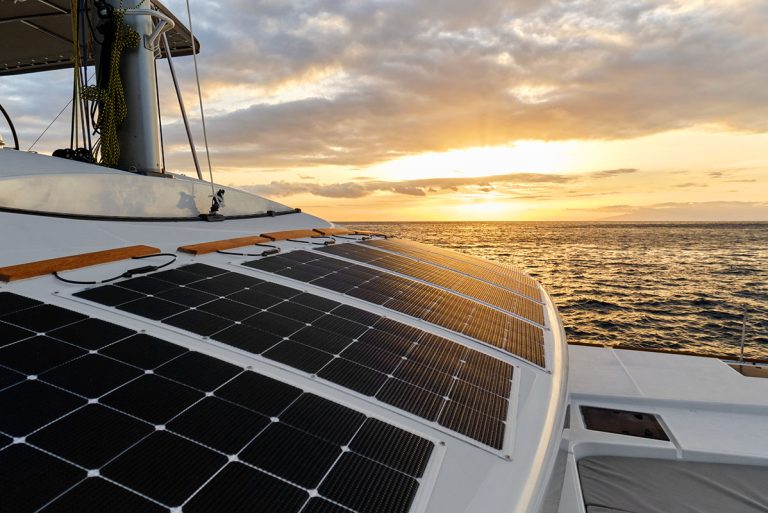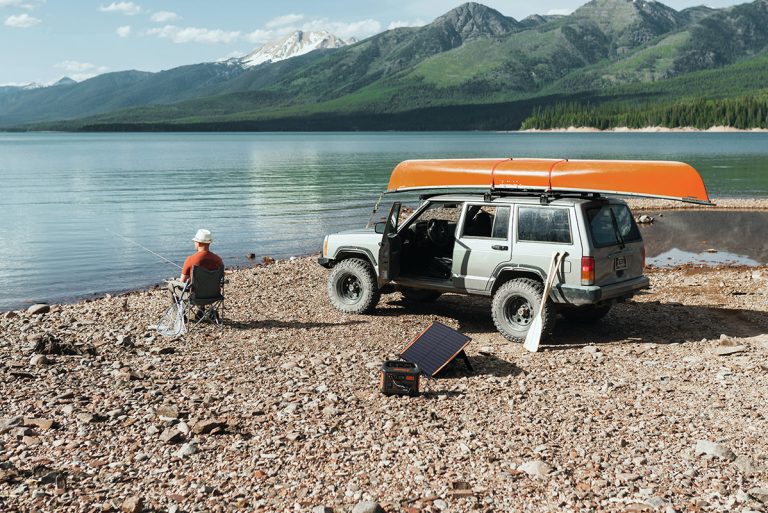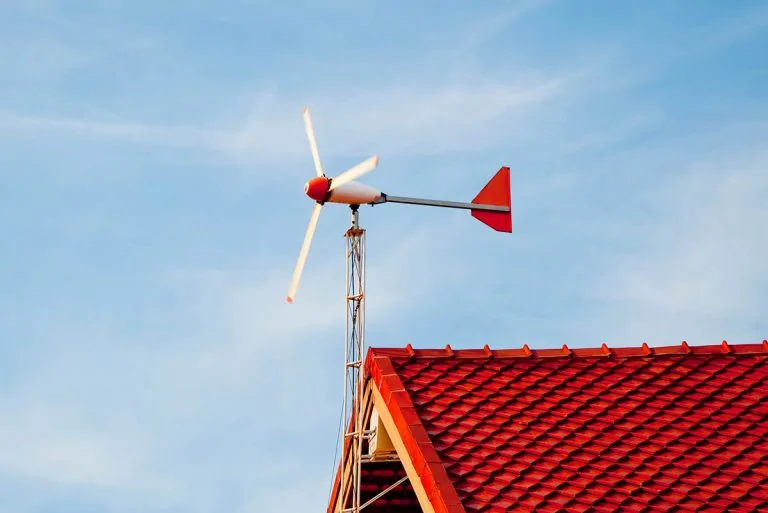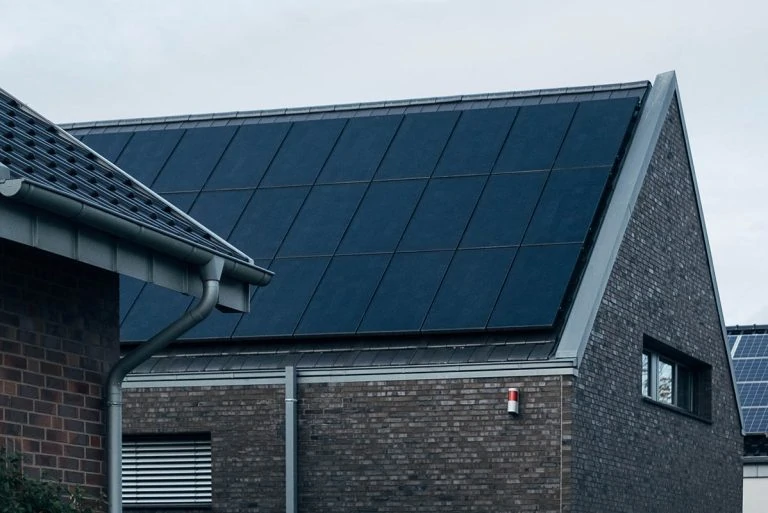Solar panels offer numerous environmental and economic benefits for homeowners and businesses, and the solar industry is quickly growing throughout the United States. It’s estimated that homeowners save $1,500 each year when they install a solar panel system, amounting to $25,500-$33,000 in savings throughout the system’s life.
For solar system owners across the country, however, optimizing the production of solar energy means different things. It’s no secret that the angle of a solar panel impacts its production – but by just how much? And what’s the optimal tilt angle for solar panels?
The truth is, there is no single, ideal angle for solar panels: at different times of the year, the optimal angle may differ significantly. The optimal tilt angle is different for every location, varying due to factors like the seasons and the average position of the sun in that particular location.
So, how can you determine the best tilt angle for your solar panels? If you live in an urban area in the United States, you might simply be able to find the best solar panel direction by zip code.
Our guide will help you understand everything you need to know about why solar panels need a tilt angle, how it is calculated, and what it means for production.
Why do solar panels need to tilt at an angle?
Solar radiation is emitted by the sun in differing quantities around the world. Solar technologies, such as solar panels, serve to capture this radiation and turn it into usable energy.
Solar panels utilize photovoltaics (PV), one of the main two solar technologies. When sunlight hits a solar panel, energy from the sun is absorbed by the PV cells in the panel. This energy then creates electrical charges that cause electricity to flow.
To optimize the amount of sunlight that hits the surface of a solar panel, they are tilted vertically, at a ‘tilt angle’. This is because the sun’s position in the sky moves throughout the day, and its position and angle also changes with the seasons.
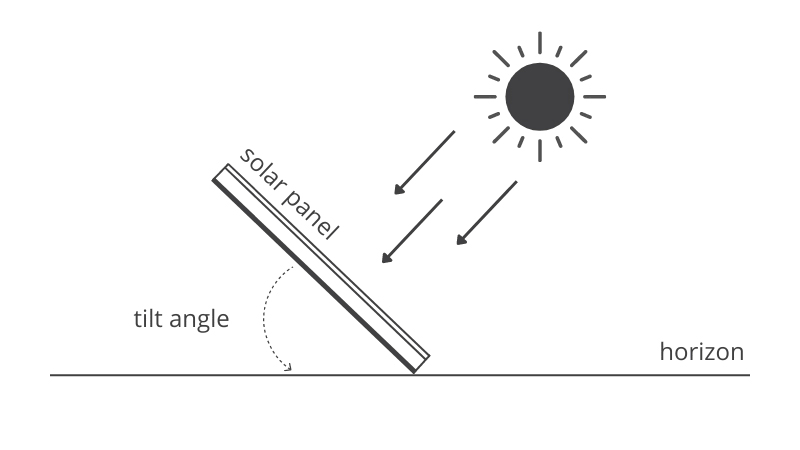
While solar panels do work in cold weather, energy production can be impacted in places where the winter is longer, and there is less sunlight and length of daylight.
In all locations, however, the goal is for solar panels to be exactly perpendicular to the incoming solar rays, so that they can produce the most electricity possible.
Generally, the sun is at a higher position during summers and a lower position during winters. However, there is an average position between the two, which is optimal for photovoltaic panels.
This average position corresponds to the latitude of the place where you are housing the panels: tilting it at that average angle would produce the highest output.
While some solar system owners opt to keep their panels at a fixed angle throughout the year, this method is not the best way to optimize solar output. Because the sun is generally higher in the summer and lower in the winter, you can capture more energy during the whole year by adjusting the tilt of the panels according to the season.
How to calculate your optimal tilt angle
Let’s dive into how to calculate the optimal tilt angle for your solar panels. As a general rule of thumb, keep in mind that the panels need to be more vertical during winter to face the lower sun directly, and more tilted towards the ground during summer to face the higher sun.
The angle of your solar panel’s tilt during the summer and winter simply depends on where you live.
There are two methods for calculating the tilt angle for solar panels. Both of these angles require latitude degrees.
1. Adding and subtracting latitude
Whatever your latitude is, you can subtract 15° from it to calculate the angle for summer.
For winter, you can calculate the angle by adding 15°. For fall or spring, you can just subtract 2.5° from the latitude. For example, if the latitude of your city is 35°, then the tilt angle for summer would be 20° (35° – 15°) and for winter 50° (35° + 15°).
2. Multiplying the latitude
The second method is more effective, and more accurate, because it calculates the angle not only for the season but also for the midday sun, which is when the sun is hottest during any day.
For winters, you multiply the latitude by 0.9 and then add 29°. For summers, you multiply the latitude by 0.9 and then subtract 23.5°.
The same latitude of 35° would have a tilt angle of 59.6° for winter and 7.1° for summer. This total calculation is about 10° more or less from the readings obtained using the first method.
Are solar trackers helpful?
Some solar system owners opt to install solar tracking systems rather than adjust the tilt of their panels themselves.
Solar tracking systems allow solar panels to follow the sun’s path as it moves from east to west. They improve solar panels’ exposure to sunlight and increase the amount of energy they produce by ensuring they face the sun for as much time as possible.
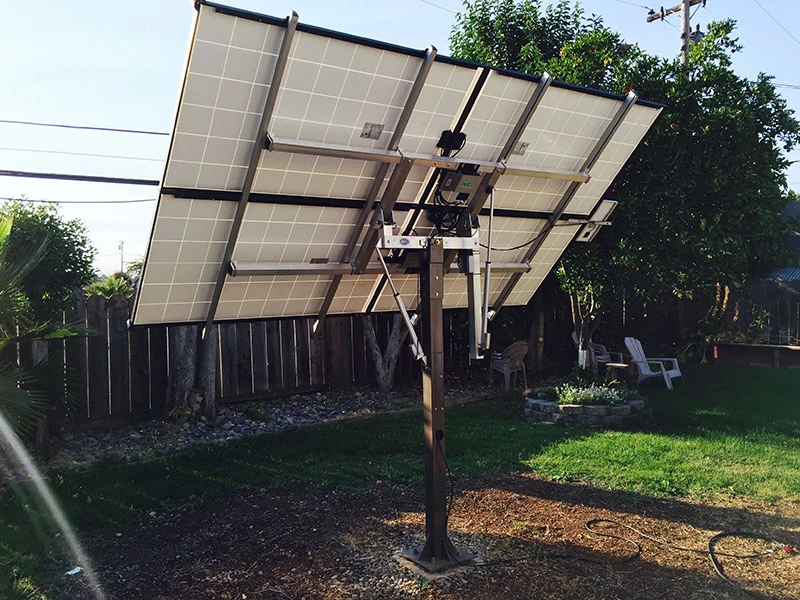
Source: Wikimedia / Adsala
However, solar trackers are only viable on ground-mounted panels, which is not often the case in domestic use. For roof-mounted panels, it is difficult to use trackers.
Also, these systems can be costly, raising your overall budget for solar energy solutions. Whether you own or lease your solar panel, these trackers require more complex installations for domestic systems.
As a result, solar panel trackers are most commonly used in commercial solar projects, where maximum output is needed all the time. The added cost and complexity of this tracking feature generally requires more panels to make it a worthy investment.
Fortunately, if you know your optimal solar panel direction by zip code, you will not need to install a tracking system.
What other factors affect the angle of a solar panel?
Aside from your location, latitude, and season, there are a few other factors at play that can impact the output of your solar system.
Roof design
Most homeowners opt to install solar panels on the roof of their house to save space. These homeowners must take the pitch of their roof into account: most roofs have an inclination of 30 to 40 degrees. At this pitch, the solar panel can lie flat on the roof and get enough sunlight to produce adequate electricity.

When a roof is very steep, it can be difficult to achieve the most optimal tilt angle for the panel, especially if it is lower than the angle of the roof. In such a scenario, the best thing to do would be to keep the panels lying flat.
The same is the case with a low-angled roof, which may require a special racking system to install the panels at the correct angle. Placing them flush against the roof would produce lower output.
If your roof is flat, you would need a racking system to place them at any angle you need. However, when it comes to installing solar panels on the roof, space could be an issue. You do not want the panels to be too close together as their shade might limit the exposure to the adjacent panels.
To combat this issue, some homeowners opt to replace their roof with solar panels.
Online calculators can help you determine your roof’s capacity to hold solar panels of varying weights.
Direction of the panels
The tilt angle of a solar panel is not the only angle that must be considered to produce the best outcome from photovoltaic panels, the direction the panels are facing is vital as well.
In technical terms, this measure is called the Azimuth angle, referring to the horizontal orientation of the panels in relation to the equator.

Generally, solar panels should be facing towards the equator:
- In the northern hemisphere, it is best to face the panels south as the sun is always in the south within the northern hemisphere.
- If you are in the southern hemisphere, then face them north.
It’s important to note that the south or north indicated by your compass may not be the most accurate, as it is the magnetic south or north. In some places, the reading may be inaccurate by up to 25°. However, an inaccuracy of less than 10° would not make much of a difference in your Azimuth angle.
Winter weather and snow
Winter weather can consist of snow, sleet, and hail, and the sun is at a lower position during the winter. Days are also shorter, giving less time for your solar panels to soak up the sun’s rays.
Because the sun is lower, you’ll want to keep your solar panels tilted at a lower angle during the winter to ensure they face the sun directly. However, such low angles can trap snow on the surface of the panel, reducing its output. When any material rests on the surface of a solar panel, from snow and dust to leaves, its production is hindered.
If you live in a place where it regularly snows, it may make sense to keep the panels at a steep angle, or the angle suitable for the summer, so that snow easily falls off.

Temperature
Solar panels are sturdy enough to withstand high temperatures. However, in some places where the temperatures soar very high during summer, heatwaves may negatively affect output.
Depending on where they are installed, hot temperatures can reduce the output efficiency of solar panels by 10 to 25%. But why?
Because the electricity generated by solar panels comes from a flow of electrons inside the electrical circuit, these electrons can bounce around too much when temperatures soar. This reduces the amount of electricity generated by much – and this reduces voltage, or the amount of electricity generated.
For instance, in cities like Phoenix, Arizona, solar panels require proper airflow around the panels to keep them working in their optimal state.
Solar panel angle by zip code
Now that we know all of the different factors that can impact your solar panel production, you can figure out the optimal solar panel direction by zip code.
The table below features a solar panel angle by zip code for at least one city from every state in the United States. There is an angle for both the summer and winter months that will deliver optimal results for your solar panel system.
If you live in one of these zip codes or somewhere near them, you can use the readings to set up your racking system. These have been calculated using the solar panel angle calculator for solar noon, the exact halt of the day when the sun is at its brightest.
| City | Zip Code | Solar Panel Angle Summer | Solar Panel Angle Winter |
| Albuquerque, NM | 87101-87199 | 78° | 32° |
| Anchorage, AK | 99501-99587 | 29° | 6° |
| Annapolis, MD | 41401-21411 | 74° | 28° |
| Atlanta, GA | 30301-31196 | 80° | 32° |
| Austin, TX | 78701-78799 | 84° | 30° |
| Baton Rouge, LA | 70801-70898 | 84° | 36° |
| Birmingham, AL | 35005-35298 | 80° | 32° |
| Boca Raton, FL | 33427-33496 | 88° | 40° |
| Boise, ID | 83701-83735 | 72° | 24° |
| Boston, MA | 02101-02467 | 72° | 42° |
| Buffalo, NY | 14201-14280 | 72° | 43° |
| Casper, WY | 82601-82636 | 70° | 24° |
| Charlotte, NC | 28105-28299 | 78° | 35° |
| Charleston, SC | 29401-29499 | 80° | 34° |
| Chicago, IL | 60007-60827 | 72° | 24° |
| Cincinnati, OH | 45201-45299 | 74° | 28° |
| Columbus, OH | 43004-43291 | 74° | 26° |
| Concord, NH | 03301-03305 | 70° | 24° |
| Dallas, TX | 75001-75398 | 80° | 34° |
| Denver, CO | 80014-80293 | 76° | 40° |
| Detroit, MI | 48201-48288 | 72° | 24° |
| Dover, DE | 19901-19906 | 74° | 28° |
| East Providence, RI | 02860-02916 | 72° | 24° |
| Fargo, ND | 58102-58125 | 66° | 20° |
| Great Falls, MT | 59401-59405 | 66° | 18° |
| Hartford, CT | 06101-06167 | 72° | 24° |
| Honolulu, HI | 96801-96898 | 80° | 42° |
| Huntington, WV | 25701-25779 | 76° | 28° |
| Indianapolis, IN | 46107-46298 | 74° | 26° |
| Iowa City, IA | 52240-52246 | 72° | 24° |
| Jackson, MS | 39201-29276 | 82° | 34° |
| Little Rock, AR | 72002-72260 | 78° | 32° |
| Los Angeles, CA | 90001-91610 | 80° | 34° |
| Louisville, KY | 40018-40299 | 76° | 28° |
| Madison, WI | 53558-53794 | 70° | 24° |
| Minneapolis, MN | 55401-55488 | 68° | 22° |
| Montpellier, VT | 05601-05633 | 70° | 22° |
| Nashville, TN | 37011-37250 | 78° | 30° |
| New York, NY | 10004-11104 | 72° | 41° |
| Newark, NJ | 07102-07198 | 72° | 41° |
| Omaha, NB | 68007-68198 | 72° | 26° |
| Orlando, FL | 32801-32897 | 86° | 38° |
| Phoenix, AZ | 85001-85709 | 80° | 33° |
| Pittsburgh, PA | 15106-15295 | 74° | 26° |
| Portland, ME | 04019-04123 | 70° | 22° |
| Portland, OR | 97201-97296 | 68° | 46° |
| Raleigh, NC | 27601-27698 | 78° | 36° |
| Rapid City, SD | 57701-57709 | 70° | 22° |
| Reno, NV | 89501-89599 | 74° | 26° |
| Richmond, VA | 23173-23298 | 76° | 30° |
| Saint Louis, MO | 63101-63199 | 74° | 28° |
| Salt Lake City, UT | 84101-84199 | 74° | 26° |
| San Antonio, TX | 78006-78299 | 84° | 38° |
| San Diego, CA | 91911-92199 | 80° | 33° |
| San Francisco, CA | 94016-94188 | 76° | 38° |
| Santa Fe, NM | 87501-87507 | 78° | 30° |
| Seattle, WA | 98101-98199 | 66° | 18° |
| Springfield, IL | 62701-62796 | 72° | 24° |
| Tulsa, OK | 74014-70193 | 78° | 30° |
| Washington D.C. | 20001-20456 | 74° | 39° |
| Wichita, KS | 67101-67298 | 76° | 28° |
If you don’t want to adjust your solar panel angle every few months, you should keep it at an angle suited for the season you need it to be most productive, or for the season that lasts longest in your area. Keeping your solar panels at a fixed angle can still give you efficient, clean electricity to power your home.
For most southern states and California, a fixed angle would be at the optimal angle for summer. On the other hand, for the northeast and midwestern regions where summer is shorter, the better choice would be the low winter angle.
However, if you do get the opportunity to change their angles throughout the year, you will get maximum output for the whole year. If you are installing a large amount of solar panels, you should invest in a solar tracker, which will eliminate the need to manually adjust tilt angles.
Conclusion on solar panel angling
With rising energy costs and the solar incentives offered by some U.S. states, going solar is a cost-effective decision for the majority of homeowners.
However, by installing solar panels, you are also helping protect the environment. You can make the best of your investment if you know the best angle for your solar panels.
Finding the best solar panel direction by zip code is a simple and effective solution to ensure your solar panel system is working in its most optimal state. You’ll save money and power your home more effectively when you tilt your solar panels the right way.
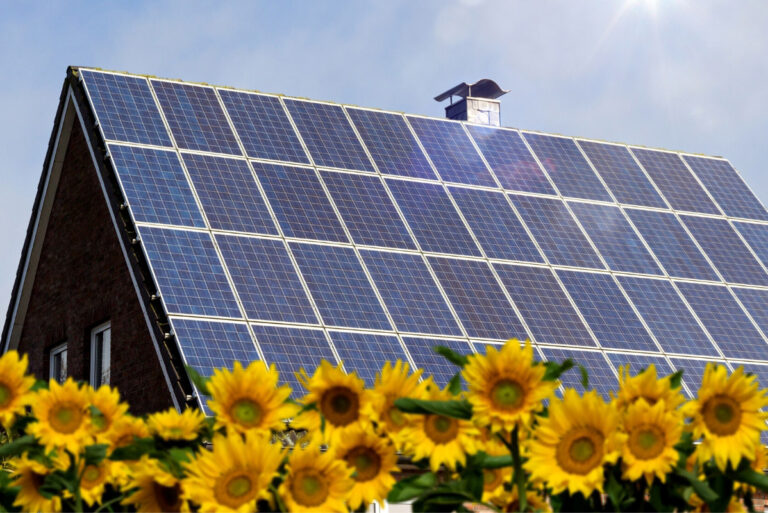
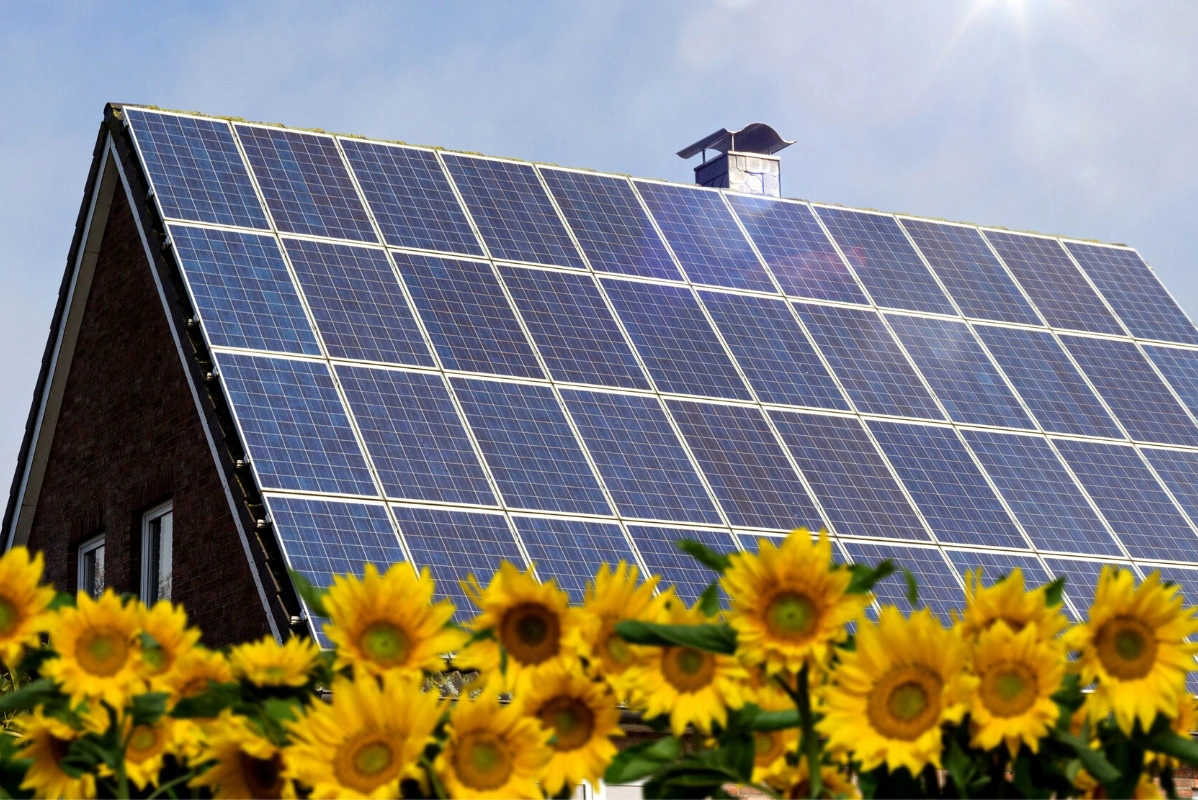

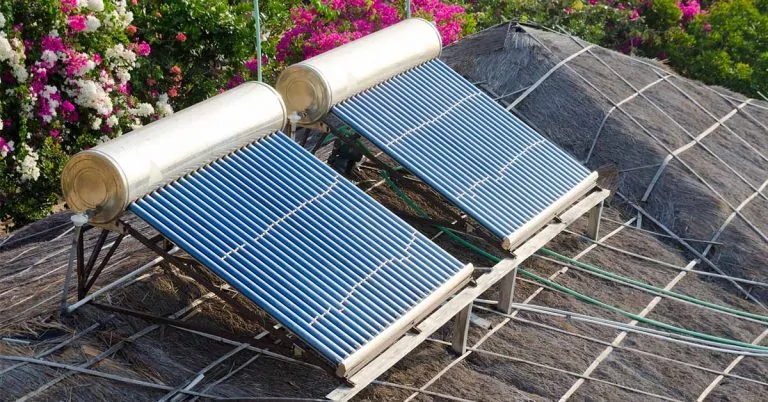
![6 Best Solar Inverters in 2024 [Including Buying Guide]](https://greencoast.org/wp-content/uploads/2019/10/best-solar-inverters.jpg)

